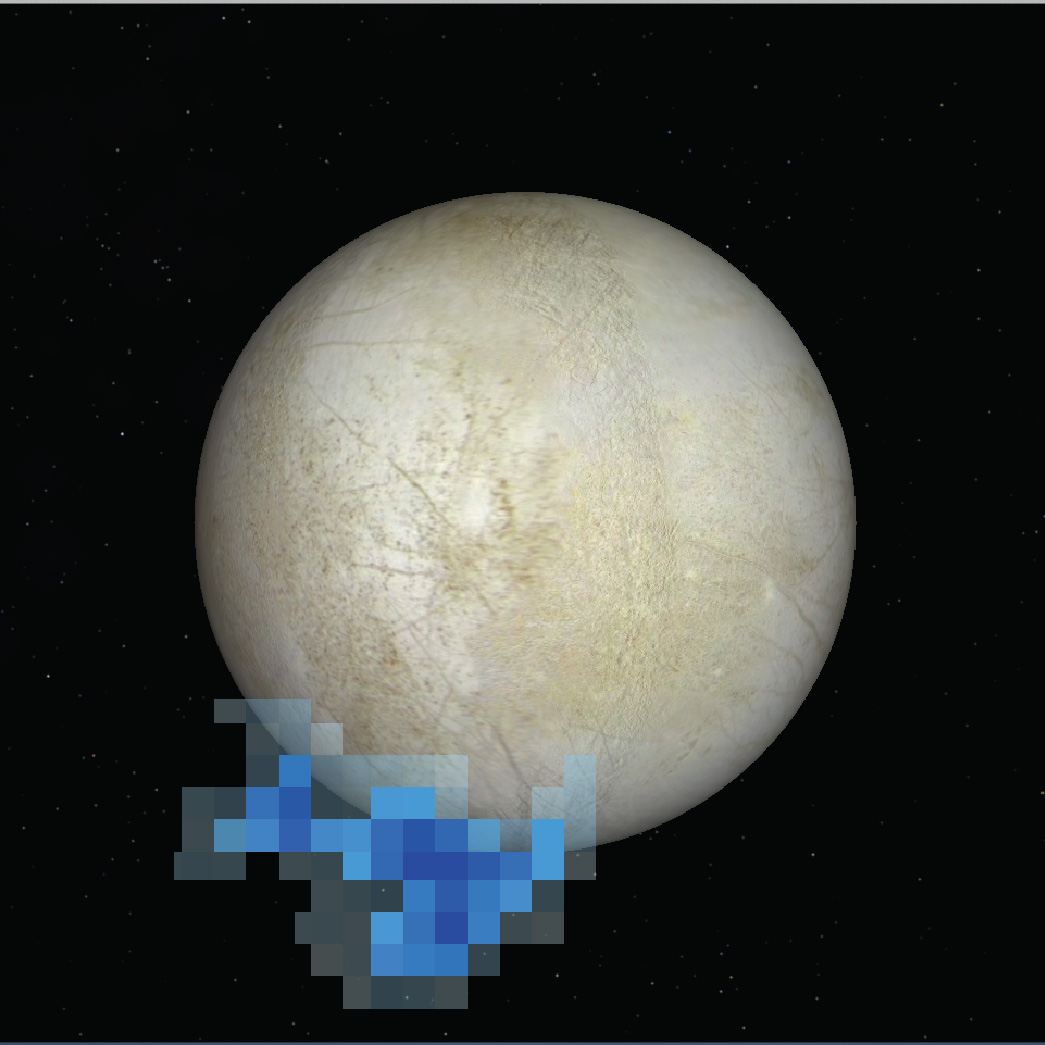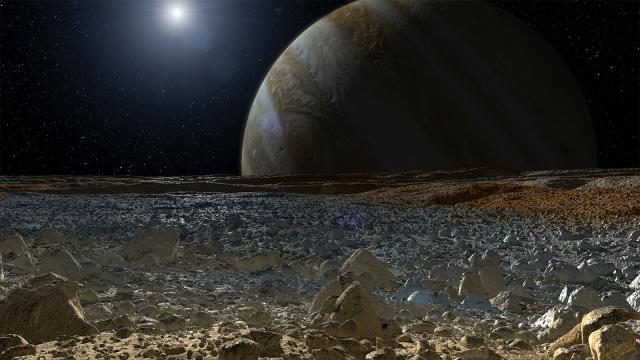Sometimes, scientists have the answers all along – they just don’t think to ask the question. For example, it appears that in 1997, the Galileo orbiter flew through a jet of water shooting out from Jupiter’s moon Europa without even trying.
Scientists think that Europa has an ocean below its icy surface, which could be a big deal. When we hear water, we think “life,” and maybe life found a way in Europa’s ocean. Recent Hubble space telescope images appeared to show evidence for this ocean in the form of plumes of water shooting forth from cracks in the moon’s surface ice. So, a team of researchers in the U.S. thought, maybe there’s more evidence for these plumes elsewhere, like in 20-year-old data from the Galileo orbiter.
“This wasn’t planned out,” study author Xianzhe Jia from the University of Michigan told Gizmodo. “It just so happened that the spacecraft passed through a region where we saw plumes. It was fortuitous.”
Galileo was originally sent to study the geomagnetic environment around Jupiter and its moons, Jia explained. Plumes weren’t really on its radar. But back in 2013, NASA announced that Hubble spotted what appeared to be water vapour in the space above the moon’s south pole. Jia and his team thought that they could find evidence for the plumes using the machinery Galileo was using for other purposes.

Data from the plume spotted by the Hubble Space Telescope in 2012Image: NASA/ESA/L. Roth/SWRI/University of Cologne (NASA)
The team found the evidence they were looking for. On December 16, 1997, Galileo flew just 400 kilometers above Europa’s surface and recorded a quick, isolated spike in the magnetic field strength alongside a simultaneous spike in the energy of the particles it detected. Galileo’s scientists were reluctant to blame Europa for the spike, suggesting it instead came from Jupiter’s magnetic field, but now it seems like the probe was just flying through a plume. They published the results today in Nature Astronomy.
Other scientists were excited about these results. “It’s incredible that these authors were able to go back to 20-year-old observations from the Galileo spacecraft with new information and fresh eyes and find this smoking-gun evidence that Galileo encountered one of Europa’s plumes,” Jessie Christiansen, staff scientist at the NASA Exoplanet Archive, told Gizmodo.
Grant Tremblay, an astrophysicist at Harvard-Smithsonian Center for Astrophysics, was equally pumped about the results: “Life or no, Europa is calling to us. Let’s go,” he told Gizmodo. But he also reminded us to be cautious about the paper. The data is consistent with the idea that Galileo flew through a plume — but the consistency is based on scientist-built simulations of what a plume should look like, which might not necessarily be right. Maybe Galileo spotted something else.
Still, the timing of this discovery is important. Scientists are gearing up for a “Europa Clipper” mission that would visit and study Europa, and potentially sample the plumes for biological material. After all, “Europa’s possible subsurface ocean remains among the best candidate harbours of extraterrestrial life in our Solar System,” said Tremblay, who is proposing an instrument to put on the Clipper. Christiansen too said that this observation improves confidence that the Clipper would see plumes.
In fact, last week, a congressman from Texas passed around this very study, which at the time was still unpublished, during a meeting of the Commerce, Justice, and Science subcommittee in order to build support for the Europa Clipper mission. The subcommittee approved the bill, which means it will now go on to the broader House Committee on Appropriations for approval.
And who knows what other secrets are hiding in data from old NASA missions? Two weeks ago, scientists found a magnetosphere around Ganymede, another of Jupiter’s moons, in 1996 Galileo data. Said Christiansen: “It makes me wonder what other gems are waiting to be discovered in NASA’s archives!”
